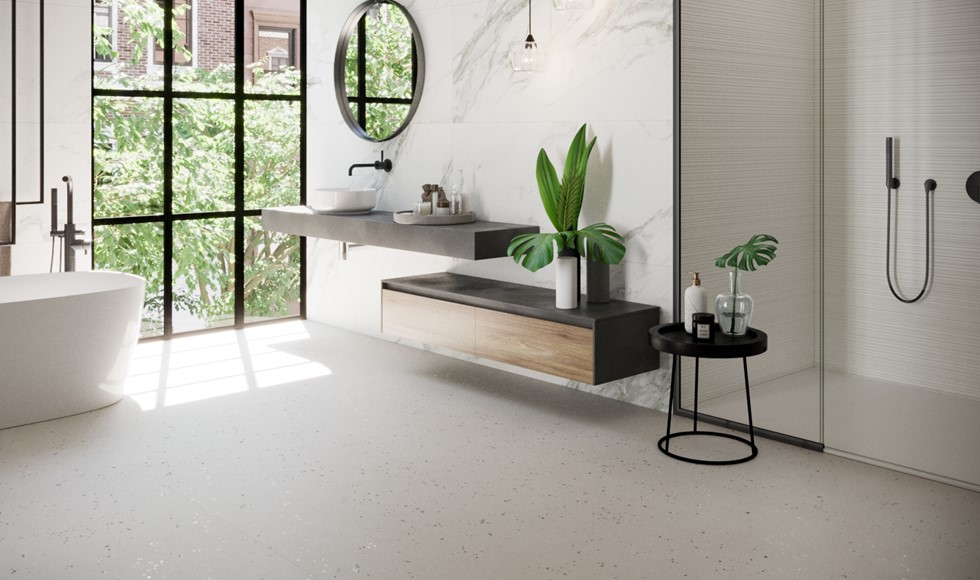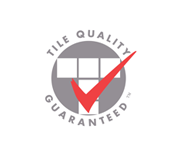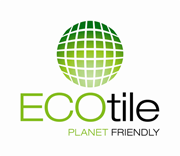
The type of flooring and wall surfaces chosen would not be specifiers first choice for light illumination. However, sourcing materials that reflect light can absolutely improve the light in a room particularly if high gloss, three-dimensional, tiles are chosen. Light reflected off such tiles helps to illuminate providing a brighter and warmer atmosphere.
Light reflectance and how it relates to interior finishes is an important consideration when dealing with sustainability in our architecture. If the light in a room is improved by merely choosing an appropriate surface material and colour versus using high energy-based lighting, it will work to save the client money.
The energy efficiency of a product can be measured by the LRV (Light Reflectance Value). The LRV is ascertained by determining the quantity of useable and visible light reflected by a surface, in all directions and at all wavelengths, when illuminated by a light source. It is a measurement that indicates how much light a colour reflects, and how much it absorbs. This measurement is quantified as a number based on a scale of 0 – 100; zero is absolute black and 100 is pure white. So if faced with a dark room, it makes sense to choose materials in lighter colours, preferably white, that have a high LRV as they improve light illumination.
The LRV can also be affected by the surface of the substrate. A three-dimensional, glossy surface will have better reflectance whilst flat surfaces do not have this property and reflect only in a diffused manner.
By utilising natural light and considering the LRV of materials, there is less energy spent on lighting costs, as well as cooling costs to keep the space at a comfortable temperature which in turn means a cost-efficient solution for any build space.

Copyright TILE WAREHOUSE MARKETING, H.O.












